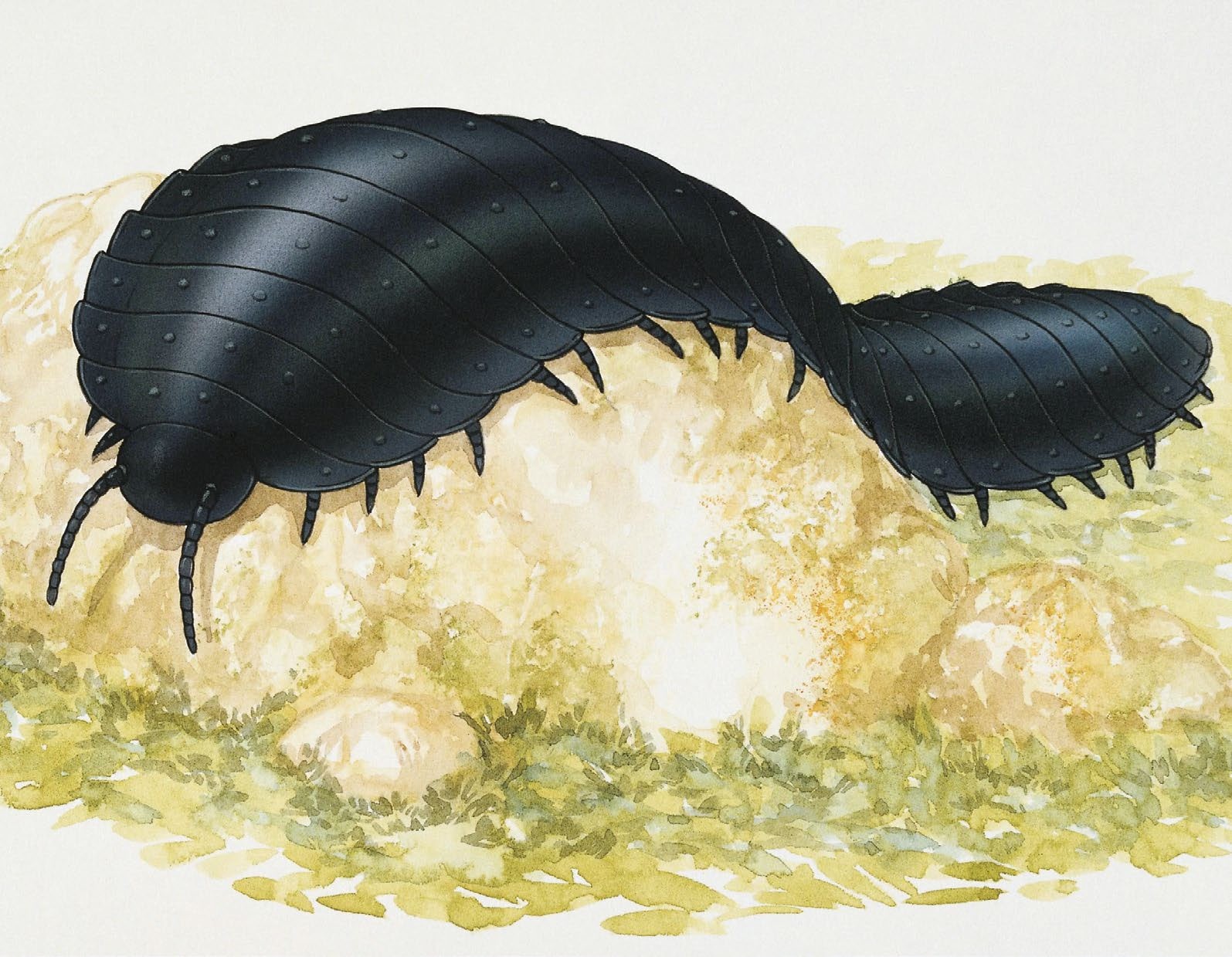
An illustration of what Arthropleura might have looked like, not including some of the new head characteristics discovered by researchers
The face of a car-sized, millipede-like creature, the largest arthropod ever to live, has finally been revealed thanks to two well-preserved fossils. The arthropod, called Arthropleura, lived in forests near the equator between 346 million and 290 million years ago, during the late Paleozoic era. In the oxygen-rich atmosphere at that time, Arthropleura could grow to a massive 2.6 metres long and weighed over 45 kilograms. “Arthropleura … has been known since the 18th century, over 100 years, and we hadn’t found a complete head,” said Mickaël Lheritier, a palaeontologist at Claude Bernard University Lyon 1 in France. “Now, with the completed head, you can see the mandibles and the eyes, and these characteristics can [help us understand] the position of this [creature] in evolution.”
The giant arthropod had perplexed palaeontologists for decades. Arthropleura’s body had characteristics like a millipede. But without the head, scientists couldn’t understand the creature’s relationship to modern arthropods like millipedes and centipedes. While these two modern creatures may look similar, they actually diverged about 440 million years ago, way before Arthropleura came around. Palaeontologists wondered if Arthropleura was a member of the millipede group or the centipede group. Arthropleura’s family-tree controversy “features fierce debates about its affinities,” James Lamsdell, a palaeontologist at West Virginia University, wrote in an accompanying perspective published in the same journal as the new study. But with the discovery of an intact head, “the mystery of Arthropleura now appears solved.”